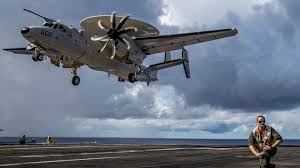
The recent decision by the United States to deploy additional naval forces to the Middle East has raised questions about whether Washington is preparing for a potential conflict between Israel and Iran. The move comes amid rising tensions in the region, prompting speculation about the motivations behind the U.S. military buildup.
Increased U.S. Naval Presence in the Middle East
In recent weeks, the U.S. has significantly increased its naval presence in the Middle East, sending more warships, aircraft carriers, and other military assets to the region. The deployments have been positioned strategically to enhance the U.S. Navy’s ability to respond quickly to any emerging threats or conflicts.
This escalation is seen as part of a broader effort by the U.S. to deter potential aggression, particularly in light of escalating tensions between Israel and Iran. The presence of these forces is intended to signal U.S. commitment to its allies in the region and to maintain stability in the face of growing uncertainties.
Rising Tensions Between Israel and Iran
Tensions between Israel and Iran have been escalating for years, driven by a complex web of geopolitical, military, and ideological factors. Israel views Iran’s nuclear ambitions and support for militant groups in the region as existential threats, while Iran sees Israel and its allies as key obstacles to its regional influence.
See Here:
Recent incidents, such as attacks on shipping vessels in the Persian Gulf, drone strikes, and cyber warfare, have heightened the risk of direct confrontation. Both nations have engaged in tit-for-tat military actions, leading to fears that a broader conflict could erupt.
U.S. Strategic Interests and Alliances
The U.S. has long been a key ally of Israel, providing military support and diplomatic backing in the face of threats from Iran and other adversaries. The deployment of additional ships to the Middle East is seen as part of Washington’s broader strategy to protect its interests and those of its allies in the region.
By increasing its naval presence, the U.S. is also reinforcing its commitment to freedom of navigation in critical waterways like the Strait of Hormuz, through which a significant portion of the world’s oil supply passes. Ensuring the security of these routes is a key priority for the U.S., particularly in the context of rising tensions.
Preparing for Potential Conflict or Deterrence?
While the deployment of additional U.S. forces may appear to be preparation for a potential Israel-Iran conflict, analysts suggest that it is more likely aimed at deterrence. By showcasing its military capabilities, the U.S. is sending a clear message to Iran that any aggression against Israel or other U.S. allies will be met with a strong and immediate response.
The U.S. has repeatedly emphasized its preference for diplomatic solutions to regional conflicts, including the ongoing efforts to revive the Iran nuclear deal. However, the increased military presence serves as a reminder that the U.S. is prepared to act if necessary to protect its interests and those of its allies.
Implications for Regional Stability
The buildup of U.S. forces in the Middle East has significant implications for regional stability. On one hand, it may serve as a deterrent to Iran, preventing further escalation of tensions with Israel. On the other hand, the increased military presence could heighten the risk of accidental confrontations or miscalculations, potentially leading to unintended conflicts.
Regional actors, including Gulf states, are closely watching the developments, as they too have a vested interest in maintaining stability and preventing the outbreak of war. The U.S. deployments may also influence the strategic calculations of other regional powers, further complicating the already volatile situation.
Conclusion: A Complex and Evolving Situation
The U.S. deployment of additional naval forces to the Middle East is a complex maneuver that reflects the delicate balance of power in the region. While it may appear to be preparation for a potential conflict between Israel and Iran, it is more likely aimed at deterring aggression and maintaining stability.
As the situation evolves, the U.S. will need to carefully navigate its role in the region, balancing its strategic interests with the need to prevent escalation. The outcome of these efforts will be crucial in determining the future of the Middle East and the prospects for peace and stability





